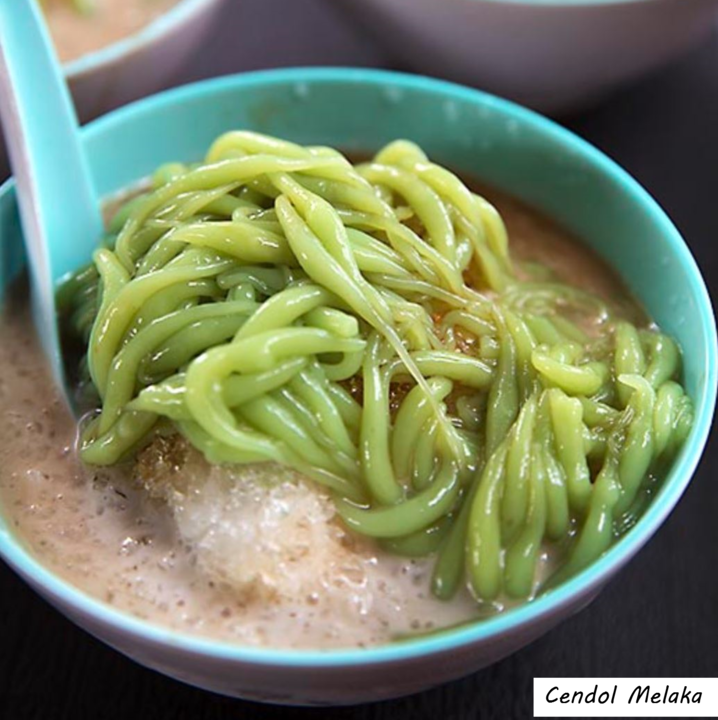
Cendol – The Celebrated Dessert of Southeast Asia
Have been eating cendol for three straight days now before it hit me, what makes up a bowl of cendol? Where did it come from? Why do I see different versions of cendol in different countries? And why does it taste so good!
**Disclaimer: The purpose of this post is simply for my own exploratory research, not to give a definite conclusion on the ridiculous question of “Which country does Cendol belong to?”**
The cendol jelly is usually made of rice flour, while pandan (screwpine) leaf extracts give rise to the greenish colour. Coconut milk as well as palm sugar syrup (gula Melaka/gula Jawa) are the two other critical ingredients. The use of palm sugar is prominent throughout Southeast Asia, with different names assigned to different region. Even for gula Jawa, there are so many variants depending on the type of palm it is made of. In Thailand, palm sugar is known as nam tan pep (น้ำตาลปี๊บ), while in Vietnam it is known as đường thốt nốt. I’m bringing this up because cendol (or a form of it) can also be found in Thailand and Vietnam, among other countries in the region.
While cendol refers to the green coloured jelly, the dish is popularly known by two different names; Es Cendol in Sunda (West Java) and Es Dawet in Central Java. The term dawet was reportedly recorded in exchange between Raden Kembangjoyo and Kisagulo, over a discussion on the elements which makes up the dawet. This brings back the origins of dawet to the Majapahit Empire, specifically the early 14th century. A more popular citation would be the one recorded in the 19th century Javanese manuscript of Serat Centhini, composed between 1814 -1823 in Surakarta, Central Java, where the dawet desert was mentioned by name.
Dawet on its own differs from the common cendol you see today. The green jellies of dawet are usually made of hunkwe flour (starch flour of mung beans, i.e. kacang hijau), and it is not uncommon to find dawet infused with jackfruit. Even among the Es Dawet family, recipes differ from region to region, such as the Es Dawet Ireng found in Yogyakarta. Ireng comes from the Javanese word which means black, and as you guessed it, the green jellies in this dish are actually black! This is a result of infusing the cendol jellies with water mixed with burnt jerami (dried straw, for a lack of better word), giving the jellies a unique flavour and texture.
It is widely believed that the word cendol comes from the Malay word jendol, which means lumps, referring to the lumpy shape of the jelly. However, similar jellies (which are also made into similar cendol-isque desserts), can be found in Thailand, which the locals refer to as lod chong ลอดช่อง (lod = through, chong = hole), possibly referring to the way the jellies are made, pressing them through a hole. The resulting cendol-like dish, from what I understand, is called khanohm laawt chaawng naam kathi (ขนมลอดช่องน้ำกะทิ). [My dear Thai friends, please feel free to correct me if I’m wrong]
In Vietnam, however, the jellies are known as bánh lọt (which means falling through/sifting, possibly another reference to how they are made). Bánh lọt is the main ingredient in Vietnam’s own version of cendol, called the chè bánh lọt.
Although many regard Indonesia as the birthplace of the cendol and Melaka as home to the best tasting cendol (though CNN begs to differ), similar dishes can also be found in Myanmar, Brunei, Camdonia, and even in Timor Leste. It is difficult to conclude the origins for certain, but from what we have seen so far, a simple dessert was able to transcend geographical boundaries, hinting at the fluidity of people, culture and beliefs in Southeast Asia as a region. Rather than disputing within national borders assigned by the powers that be, why can’t we all enjoy this dish together, which has certainly brought us all joy in quenching our thirst!


